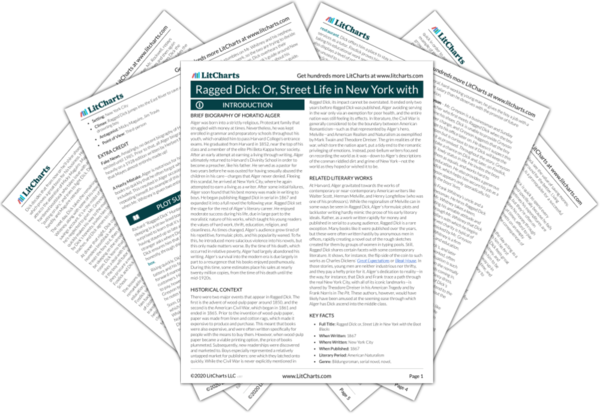AI ToolsNew
Tools to make learning and teaching easier
Ragged Dick: Or, Street Life in New York with the Boot Blacks Study Guide |
Next
Summary
|
Welcome to the LitCharts study guide on Horatio Alger's Ragged Dick: Or, Street Life in New York with the Boot Blacks. Created by the original team behind SparkNotes, LitCharts are the world's best literature guides.

Fake News. Amazingly, no decent biography of Horatio Alger existed until 1985. Prior to that, all Alger biographies relied heavily on a 1928 edition written by Herbert Mayes—a memoir that Mayes almost entirely made up!
A Hasty Mistake. Alger is notorious for having written his books so quickly that he often forgot what details he’d already included. This resulted in Alger occasionally contradicting or repeating himself. An example of this occurs in Ragged Dick, when Mr. Whitney is given two entirely different life stories.